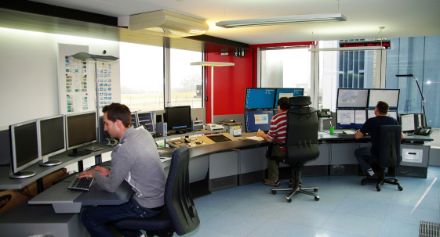Service Navigation
Search
MeteoSwiss automatic measuring network (SwissMetNet) comprises – together with the automatic precipitation stations – more than 260 measurement stations . The stations transmit data on weather and climate to the central MeteoSwiss database every ten minutes. The task of the national monitoring center in Payerne is to guarantee that this large volume of data is of a high quality. To this end, various diagnostic tools are used in order to identify errors at stations or deviations in instrument readings. Among other aspects, the flow of data to the data server is monitored in real time and the consistency of the data is checked with different tests.
In addition to the automatic monitoring network, the instruments of the SACRaM (Swiss Alpine Climate Radiation Monitoring) network as well as the measurement instruments (wind profilers, microwave radiometers) for the EMER-Met wind analysis and forecasting system for nuclear incidents are also monitored in Payerne.

Repair and maintenance work
The task of the people responsible for the network monitoring activities is to identify any problems that may occur and to initiate the required actions to rectify them. As soon as the measurement station is identified, the monitoring center can instruct one of the four regional MeteoSwiss maintenance centers to solve the problems on site hampering the measurement operations. These regional centers are located in Davos, Locarno, Payerne and Zurich.
The operation of the automatic monitoring network in Switzerland represents a specific challenge, in particular due to the possible extreme weather conditions that may occur. Careful maintenance work is thus particularly important. Each station is inspected once a year, with its respective instruments being cleaned thoroughly and calibrated. The stations are also checked every one to two weeks in order to maintain the surrounding terrain and clean the instruments, for example.
Maintenance documentation
All actions taken to rectify faults and maintain the station equipment are documented in a database. This ensures that current and future users are informed of any events that have occurred at a specific site. In particular, this is of great significance for the homogenization of climate data.